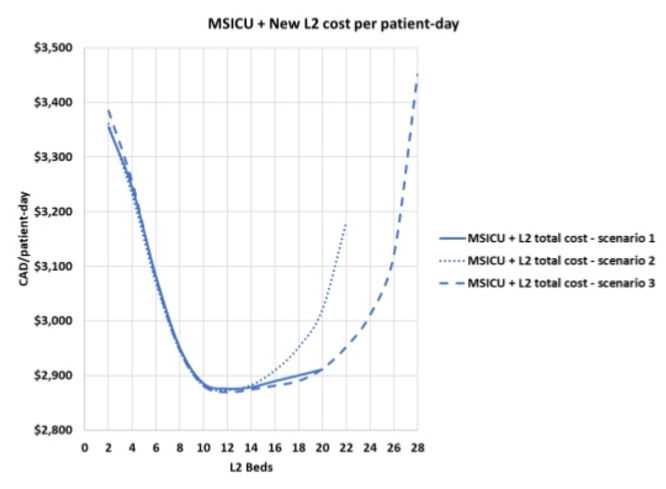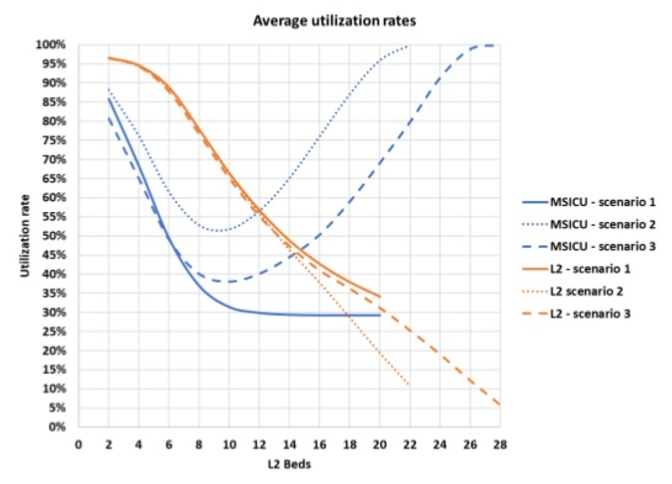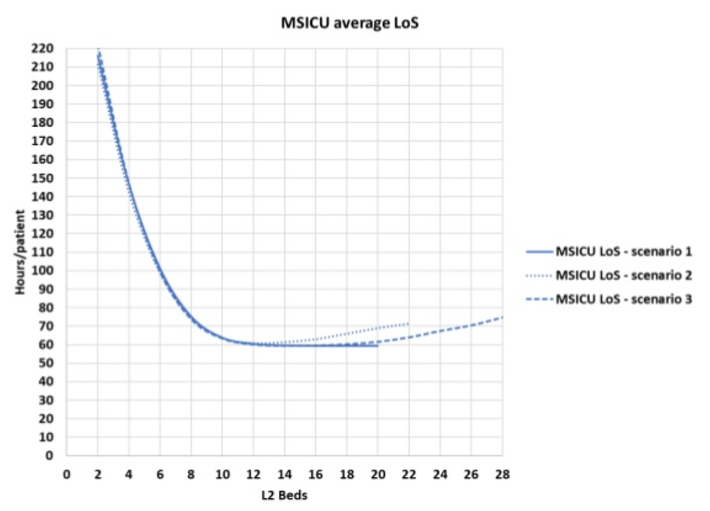Taking every factor into consideration using simulation
When looking at bed needs, every process and decision within a hospital can impact capacity and patient flow. With a huge range of parameters to consider, planning any changes to the process cannot be achieved in silo. How can you be confident that changes won't have ramifications elsewhere?
This is a key reason why LHSC utilized simulation software over other analytical methods. Using SIMUL8, the team could take a diverse range of factors into consideration to ensure accurate results, including:
- Arrival rates – these vary throughout the hour of the day, day of the week, as well as seasonally.
- Bounce backs – patient flow isn’t always linear - a patients’ journey can take them through various departments, such as the ICU and operating rooms.
- Patient’s health and death probability change over time – for example, the odds of a patient’s survival increase as they spend more time in the ICU.
- Off-service patients and length of stay – the misplacement of patients into wards that they are not originally supposed to go can lead to an increase in length of stay and costs.
- NEM scoring process – the level of nursing care where a patient could be considered for the step-down and how this score changes over time.

“Using SIMUL8, we were able to feed in all of this information to the simulation and see exactly how the process would perform in real life.”
Felipe Rodrigues, Ivey International Centre for Health Innovation


